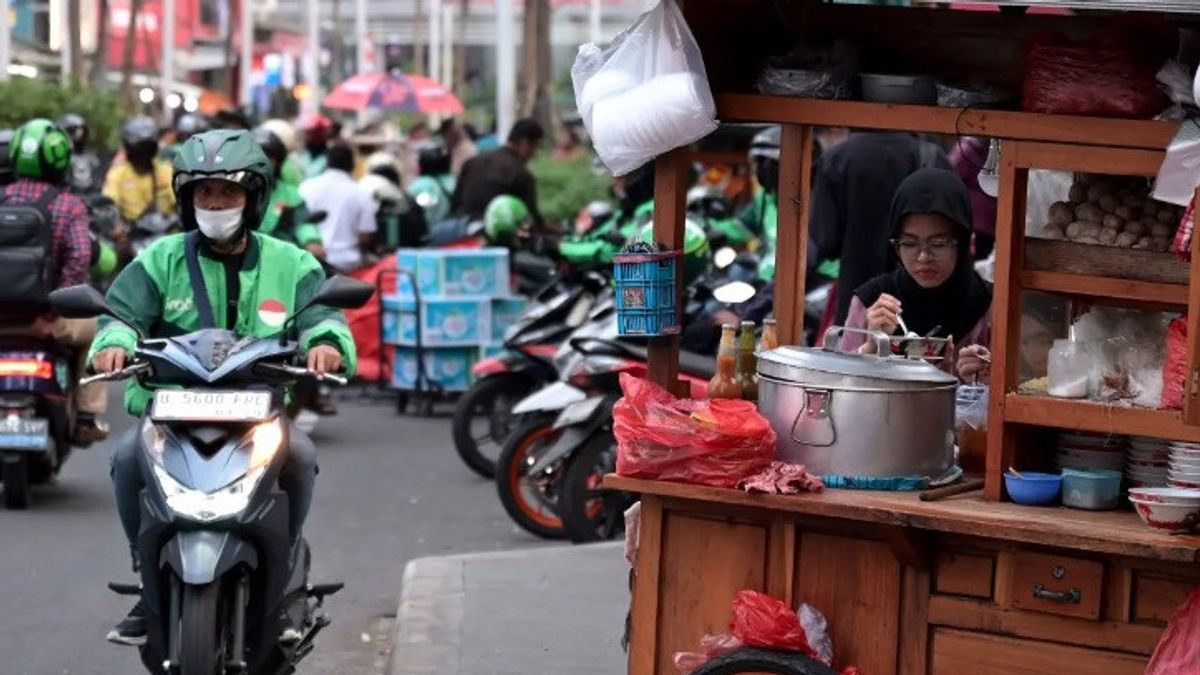JAKARTA It has been five consecutive months since Indonesia experienced general price deflation or decline. On the other hand, Bank Indonesia (BI) has asked the public to shop a lot until the end of this year to spur economic growth above five percent in 2024.
The Central Statistics Agency (BPS) noted that Indonesia experienced deflation of 0.12 percent in September 2024. Acting Head of BPS Amalia Adininggar Widyasanti said this was the fifth consecutive deflation this year and was the worst in the last five years of President Joko Widodo's administration.
"Historically, September 2024 deflation is the deepest deflation compared to the same month in the last five years, with a deflation rate of 0.12% (month to month)," Amalia said at a press conference at the BPS office on October 1.
"This deflation in September 2024 looks deeper than August 2024 and this is the fifth deflation in 2024 on a monthly basis," he continued.
Prior to this, the first deflation in May was 0.03 percent. then in a row deflation continued in June (0.08 percent), July (0.18 percent), and had improved in August (0.03 percent).
"The deflation that occurred in the last five months was seen in general contributed by the decline in commodity prices."
A simple deflation can be interpreted as a decrease in the price of goods and services that occur at the same time within a certain period of time.
At first glance, deflation seemed profitable for the community, because the prices of goods and services were more affordable. However, economist from Samuel Sekuritas Indonesia Fithra Faisal Hastiadi said deflation for five consecutive months was not a positive indication for the Indonesian economy.
"In a macroeconomic climate, if you look at it for five consecutive months, there is deflation, meaning that on the one hand prices are cheaper, but on the other hand, this actually indicates that consumers are stopping or slowing consumption, adanyagging demand," said Fithra.
The slowdown in consumer demand, explained Fithra, cannot be separated from the fact that the middle class in Indonesia has fallen. As stated in the BPS report last August, the number of people entering the middle class for the last five years has decreased.
Indonesia's middle class proportion in 2024 is 47.85 million people lower than in 2019, which is 57.33 million people. Meanwhile, the number of people in the category towards the upper class or middle class continues to grow to reach 137.5 million people in 2024, an increase from 128.85 million people five years ago.
SEE ALSO:
Director of the Center of Economic and Law Studies (Celios), Bhima Yudhistira also said that current deflation should be understood as an indication of weakening the demand side. Middle class groups find it difficult to find work, while the upper middle class refrains from holding back spending for fear of a deteriorating economic situation.
"This is not a success in controlling inflation but a sign that people are holding back spending. It is no longer even resistant to spending but the money to be spent has decreased in portion," Bhima told VOI.
If deflation continues, business actors, especially the food and beverage industry, finished clothing textiles, footwear and property business actors will revise their business plans. Currently, the Purchasing Managers Index (PMI) figure is below 50 which shows contraction or decreased raw material purchasing activity.
"This turmoil can lead to an economic recession," Bhima continued.
Economic analyst from the Bright Institute Muhammad Andri Perdana explained several factors that caused this condition. The first is the continuous termination of employment (PHK).
The Ministry of Manpower recorded 53,993 workers who were laid off as of October 1, 2024. Thousands of people who were laid off were mostly from the manufacturing sector. The provinces with the highest layoffs were Central Java, Banten, and Jakarta.
The high wave of layoffs was also strengthened by the records of the Employment Social Security Administration (BPJS) which stated that until August 2024 the number of claims for Old Age Security or JHT was 2.07 million.
Andri said that the increasing wave of layoffs reduces the income of the working class community, so they will spend more money just for priority needs.
Second, because of the lack of employment in the labor-intensive sector. When layoffs boom, the opening of new jobs in the labor-intensive sector has barely existed in the last five years, said Andri. Even though this sector is the mainstay of absorbing large numbers of workers.
This situation cannot be separated from the government's policy of boosting investment in capital-intensive sectors such as mining rather than labor-intensive ones that create new jobs.
In order to avoid a recession as many circles fear, Bhima said the new government needed to postpone the mega infrastructure project and be transferred to social protection programs for vulnerable middle class.
Then, strengthen the industrial sector by attracting more quality investment, encouraging the sustainable agricultural and fisheries sectors with the help of a larger State Revenue and Expenditure Budget (APBN), for example for fertilizer subsidies, as well as providing additional social safety nets for workers with economy or freelancers.
Fithra Faisal Hastiadi added that to overcome this situation, the job opportunities for the new formal sector. The government, said Fithra, needs to industrialize because that way jobs can increase so that demand or demand can also increase.
"In the future prices can be stable, not too cheap or expensive, affordable but does not indicate a slowdown," said Fithra.
The English, Chinese, Japanese, Arabic, and French versions are automatically generated by the AI. So there may still be inaccuracies in translating, please always see Indonesian as our main language. (system supported by DigitalSiber.id)













